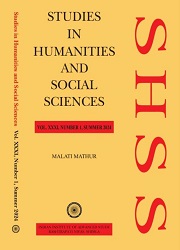The Waste Land and Odia Modernism
Keywords:
T.S.Eliot, Odia Modernism, The Waste Land, PoetryAbstract
The Waste Land by T.S. Eliot is widely acknowledged as one of the most influential poems of the twentieth century. Very few linguistic cultures of the world could remain uninfluenced for long by the poem and the new aesthetic it represented. Odia, a major language of eastern India was no exception. This article is a modest attempt to examine the reception of The Waste Land in Odisha and the way it shaped Odia literary modernity. In 1956, acclaimed poet and novelist Jnanindra Verma translated T. S. Eliot’s magnum opus The Waste Land along with a few other poems under the title “Poda Bhuin O Anyanya Kabita”, which was published by Prafulla Ch. Das. Das corresponded with Eliot regarding the translation and with his consent he motivated Jnanindra Verma to translate the major poems of Eliot. In all probability, he also gained a copyright permission for its translation into other Indian languages. More remarkable in that 80- page book was Eliot’s prefatory message written to Prafulla Ch. Das. Though The Waste Land was not immediately known to the general Odia literary circle with its publication in 1922, it has been proved to be the most influential poem (from the 1940s onwards) that shaped Odia modernity. It has helped the evolution of Odia modernity, beginning with Tagore’s mysticism through the experimentalist approaches of the progressives and lastly to a solitary movement in the 1950s, Odia modernism is spiritually rooted in Eliot’s The Waste Land.


